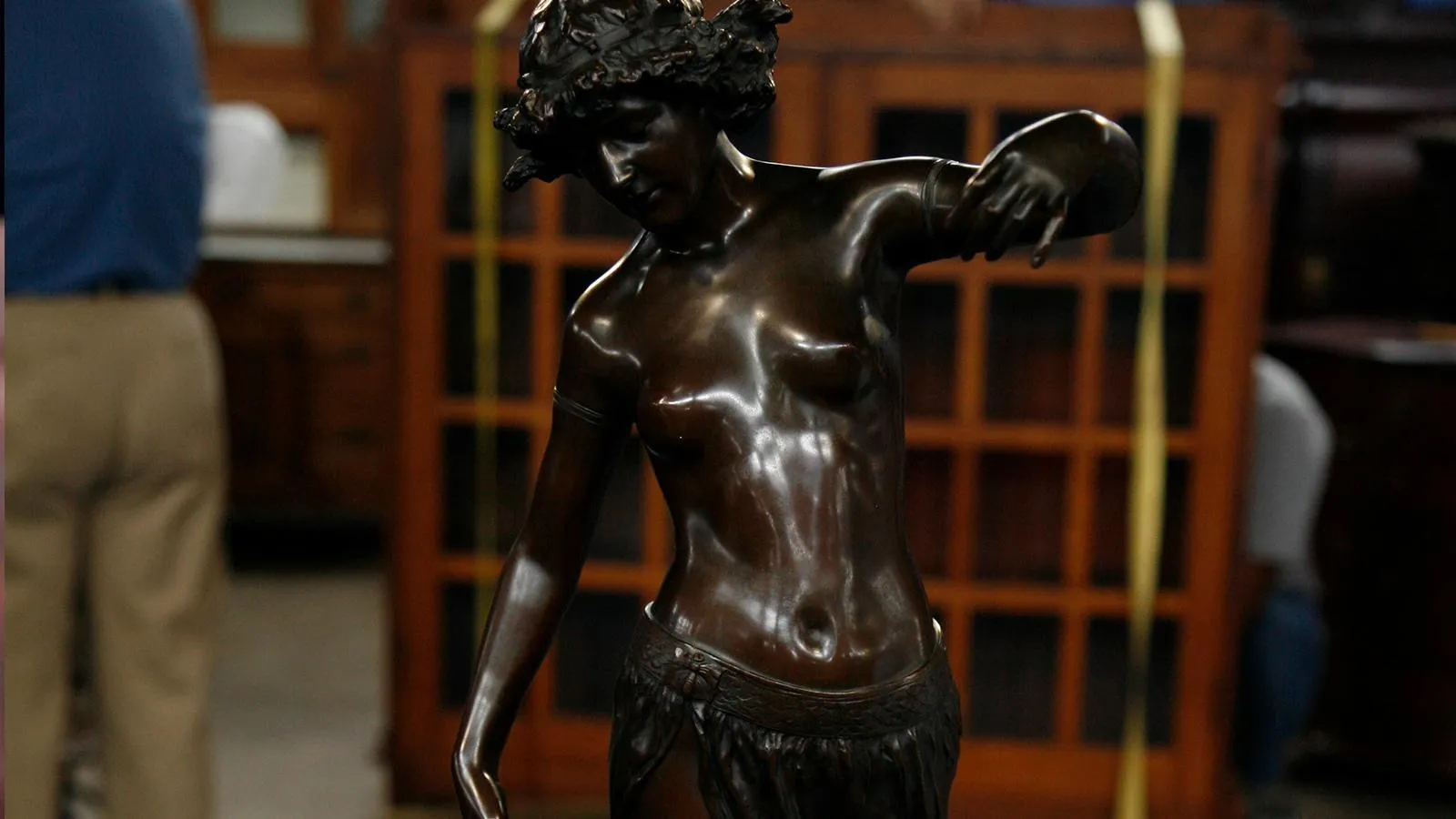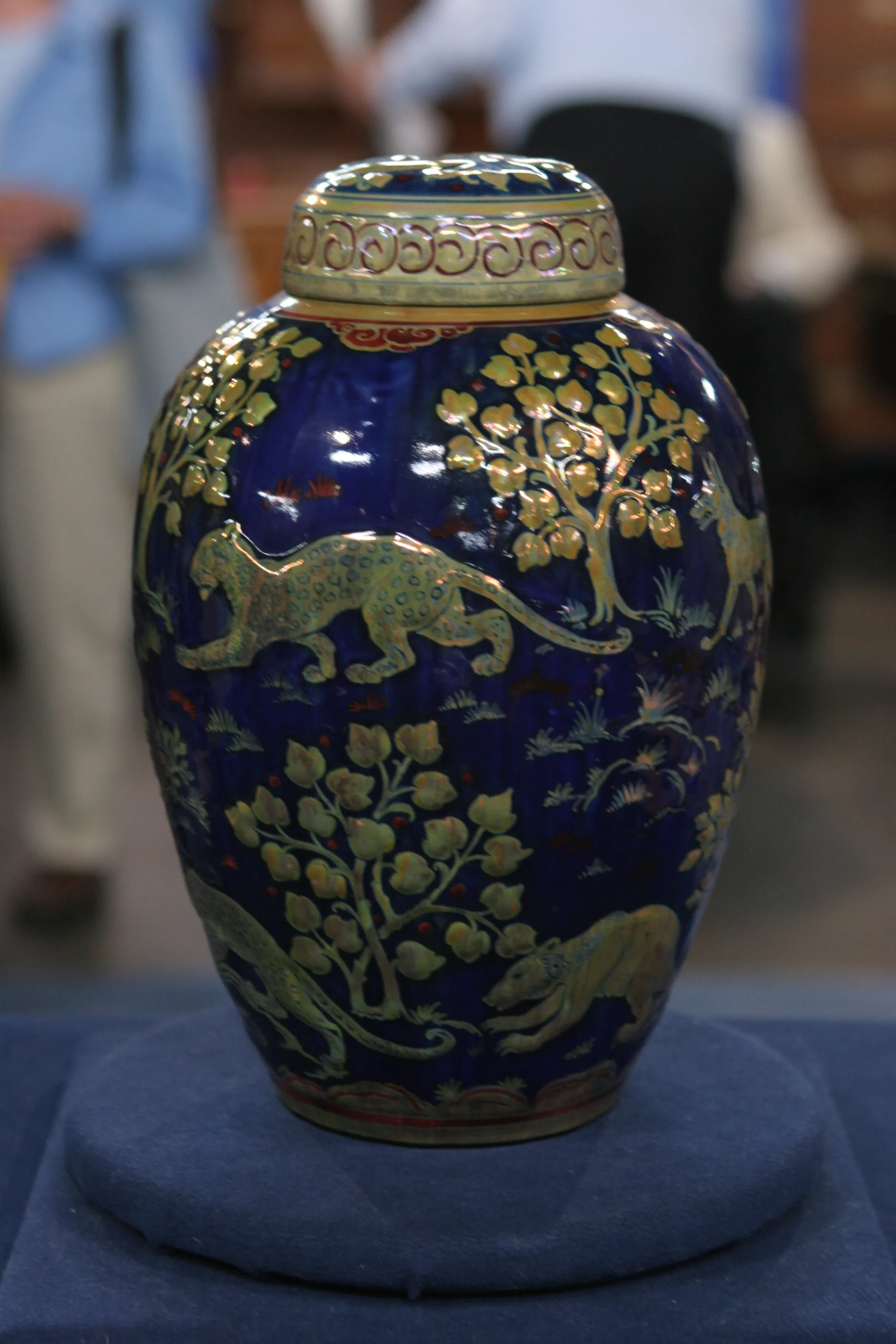APPRAISER: Now, I understand you've done a little bit of detective work in this painting already, is that correct?
GUEST: That is correct-- the artist, whose name I believe is pronounced Luis Jiménez Aranda. I initially was looking only for the Luis Jiménez, which is the signature on the bottom of the painting, and I kept coming up with an American artist who I knew couldn't possibly have done this painting. And that's when I kind of, you know, put it back and just thought, "Well, I'm gonna leave it alone for a while." And every so often, I get the urge to go back online and do more research. And then one day, you know, eureka, I found another painting by this artist that was so similar, and I could see the signature, that I figured then, by golly, I might be on something.
APPRAISER: And did you do any further research about the life of the artist? Do you know anything about his background?
GUEST: Well, when I found out who the artist, who I thought the artist was, I did start doing more, a little more research on him, not to find a whole lot, but did find out he was born, I believe, 1845, had done some painting work in France, and in fact, that's where this scene was painted, I believe, and found out that some of his paintings are in a few galleries here in the country.
APPRAISER: His elder brother was a painter, too.
GUEST: Yeah, I did find out that.
APPRAISER: And he was very, he was very influenced by him, and influenced to do similar works, which were historical genre works.
GUEST: Oh.
APPRAISER: The stylish ladies and gentlemen of the previous century. But he went to Paris, and he's working in Paris in the, in the 1870s, and quickly fell under the spell of the Realists, or the Naturalist painters there, and changed from doing those historical, narrative paintings, and started showing more typical country folk, and painting in a more naturalistic style. And I think this is a lovely example of his naturalistic style, which probably would have been painted in the 1880s. And clearly has some condition issues, which I think you're aware of, and we can see...
GUEST: Yeah.
APPRAISER: I think this is the most significant paint loss up here.
GUEST: Yes.
APPRAISER: And rather worryingly, the canvas is starting to perish around the edge around here.
GUEST: Oh!
APPRAISER: Just below where the signature is, and also it is located, Pontoise, which is in France, so that's where...
GUEST: Okay, I was right on that.
APPRAISER: He had a studio there. Many of the Spanish artists of the day would congregate there. And also I wanted to point out, it's very, very dirty.
GUEST: Yes.
APPRAISER: There's quite a lot of, I'm suspecting, nicotine all over here. I think what's telling is when we look down here. Now, that's clearly where it was under the frame.
GUEST: Right.
APPRAISER: And you can see the blues. You can see some color-- it's not a uniform yellow mush that seems to be covering it.
GUEST: Right, I agree.
APPRAISER: Even in its unrestored state, however, it certainly has value attached to it. I think for a piece like this-- I think it's a really nice example-- at auction, I would expect it to fetch somewhere in the $10,000 to $15,000 range.
GUEST: Really?
APPRAISER: Yeah, yeah.
GUEST (chuckles): My goodness! I've enjoyed it since a child and thrilled that I got to come on the ANTIQUES ROADSHOW. Thank you so much, thank you.
APPRAISER: Oh, not at all, it's my pleasure.











